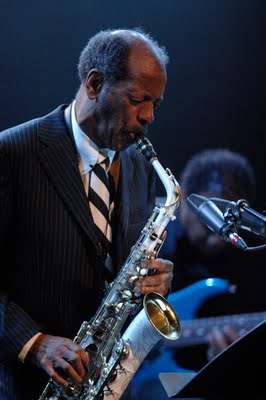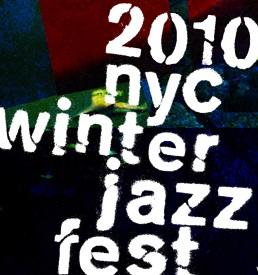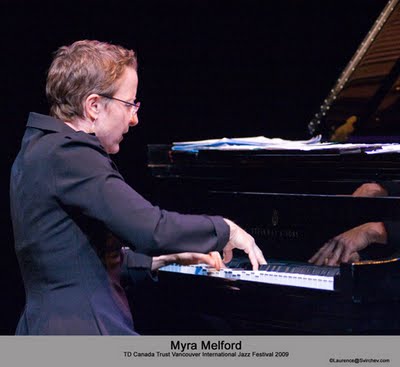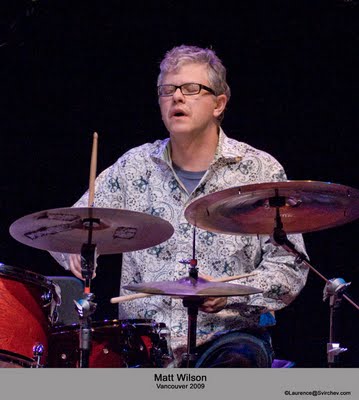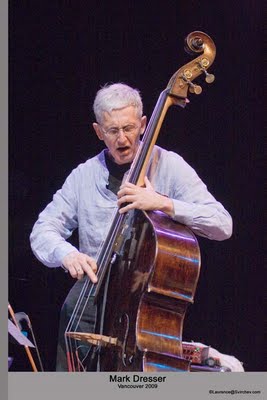Musée des beaux-arts de Montréal
30 avril au 29 août 2010
Propos et réflexions du commissaire de l'exposition, M. Vincent Bessières
Recueillis par Marc Chénard
17 mars 2010

Vincent Bessières. Photo : Éric Garault.
Au printemps 2008, Paris a accueilli une première exposition de jazz au Musée du Quai Branly, celle-ci portant sur les 100 ans du jazz. L'automne dernier, c'était au tour de Miles Davis de faire l'objet d'une grande rétrospective au musée de la musique à la Cité de la musique. Cela donne l'impression que le jazz soit vraiment dans l'air dans votre pays en ce moment. Y avait-t-il une relation quelconque entre ces deux événements par-delà le simple fait du jazz ? Puisque vous êtes le commissaire atitré de l'exposition de Miles Davis, Monsieur Bessières, je voudrais savoir si celle-ci avait été organisée comme un prolongement de l'autre ou sont-elles vraiment deux projets complètement différents, ou autonomes si l'on veut ?
Vincent Bessières : Ce sont deux projets complètement différents, menés par deux institutions très distinctes. L'exposition sur le siècle du jazz s'est déroulée au Musée du Quai Branly, et il avait pour thème l'influence du jazz sur le monde des arts en général, la peinture, la photo, la sculpture, les arts graphiques, la littérature et le cinéma. Son propos était alors très général, alors que l'exposition Miles Davis était vraiment centrée sur ce personnage et son œuvre, donc traitant d'un artiste et créateur bien précis. Ce faisant, la musique était l'objet principal de l'exposition. En ce qui a trait à ces deux expositions parisiennes, tenues en 2008 et en 2009, je vois cela comme une espèce de consécration du jazz en tant qu'expression artistique à part entière. Après avoir eu bien du mal à se faire reconnaître, il fait désormais partie du patrimoine musical mondial et le fait qu'il ait maintenant droit de cité dans des grandes institutions culturelles, comme les musées, est un bon signe, à mon avis.
Parlons maintenant de l'exposition pour laquelle vous avez travaillé. Racontez-moi d'abord comment vous vous êtes impliqué dans cette entreprise en nous faisant un peu son historique ?
V.B. : Je ne sais pas si vous êtes familier avec la Cité de la musique, mais c'est un complexe assez unique en son genre. On y trouve des salles de concert et une grande médiathèque musicale, mais elle offre également des activités éducatives et dispose d'un musée, qui non seulement abrite l'une des plus grandes collections d'instruments au monde, mais également des espaces prévus pour des expositions traitant toujours de musique, soit sur un genre en particulier, soit sur son rapport avec d'autres champs artistiques, soit sur des thématiques historiques. Cette exposition sur Miles s'inscrit donc dans une série d'événements de ce genre. Par le passé, il y a eu des rétrospectives, sur lesquelles je n'ai pas travaillé soit dit en passant, consacrées à Jimi Hendrix, Pink Floyd et John Lennon, mais aucune par rapport au jazz, ni en tant que genre ni sur un musicien. La Cité de la musique m'a donc approché pour concevoir un projet sur Miles Davis, bien que ce ne soit pas moi qui a choisi le thème, mais bien la direction. On m'a donc demandé de rédiger un projet et de leur soumettre une proposition et on l'a retenue. À partir de ce moment-là, il me fallait réunir les objets pour l'exposition, mais aussi penser à la manière d'intégrer la musique dans tout cela. Parmi mes démarches, je devais bien sûr entrer en contact avec la famille de Miles Davis et me rendre aux États-Unis pour voir ce qui serait susceptible de faire partie de l'exposition. J'entreprenais quelque chose d'un peu inhabituel, car la plupart des objets et documents allaient être exposés pour une première fois; ceux-ci nous parviendraient de collections privées ou de bibliothèques, mais pas forcément du monde des musées. C'était assez excitant comme aventure, mais aussi très différent d'une exposition de peintures où l'on obtient des prêts des tableaux tous clairement identifiés. Ici, en revanche, il fallait se poser la question ce que l'on voulait montrer, où trouver les objets et surtout comment articuler tout cela autour de la musique.
Vous étiez vraiment un détective, si je puis dire.
V.B. : Oui, mais je dirais plutôt « chasseur de trésors ». Il y avait toujours ce côté « Qu'est-ce qu'on allait découvrir et où ». Il est vrai que des objets, comme les trompettes de Miles, les partitions originales de Birth of the Cool, ou des manuscrits de la main de Herbie Hancock ou de
Wayne Shorter sont tous des trésors que j'avais envie de montrer et de partager avec le public dans une telle exposition.
Question de situer les choses dans le temps, quand avez-vous été mandaté pour soumettre la proposition de cette exposition et à quel moment les choses ont-elles vraiment démarrées ?
V.B. : C'est à la fin 2007 que le musée m'a approché avec son idée, mais c'est vraiment au début de l'année suivante que tout s'est mis en branle. Il y avait bien sûr cette première phase d'élaboration du projet, mais la chasse aux trésors s'est faite par après.
En ce qui concerne la proposition comme telle, comment cela s'est-il passé au moment qu'on vous passe la commande et que vous avez commencé à y réfléchir : l'idée directrice vous est-elle venue rapidement ou avez-vous dû chercher l'inspiration pendant un moment ?
V.B. : C'était assez clair dès le départ : l'exposition se déploierait sur un axe chronologique, axe découpé en sept segments, ou chapitres si l'on veut, chacun correspondant à une des étapes de sa vie. Comme l'exposition s'adresserait à un grand public, le meilleur moyen serait de faire passer les visiteurs de salle en salle, chacune traitant d'un chapitre, de son enfance et ses premières expériences musicales jusqu'à sa consécration finale. En tout cas, il n'était pas dans mon intention de présenter Miles et son œuvre d'une manière, comment dire, révolutionnaires, ou encore de remettre en cause la façon dont on voit Miles; bien au contraire, je voulais plutôt présenter les différents visages de l'artiste avec le plus de clarté possible. Ce qui l'était moins cependant, c'était le quoi, c'est-à-dire ce qu'on serait en mesure de montrer comme documents et objets. Une fois les étapes, ou les chapitres établis, il nous fallait les remplir en repérant les documents pertinents.
Parlons un peu plus de cette fameuse chasse aux trésors. Je suppose que vous avez fait le voyage aux États-Unis à plus d'une reprise.
V.B. : À quatre reprises pour être exact, deux fois sur la côte ouest, en Californie, où se trouve la famille, et deux fois à New York.
Madame Bondil, la directrice du Musée des beaux-arts à Montréal m'a raconté en entrevue qu'on vous a mis devant des caisses scellées. Je m'imagine que cela devait être assez merveilleux d'être le premier à découvrir leurs contenus.
V.B. : En effet, ce sont par les héritiers de Miles Davis que j'y suis arrivé. Bien que Miles ait vécu l'essentiel de sa vie à New York, sa descendance habite plutôt sur la côte Ouest, donc une partie de ses possessions ont été expédiées en Californie après sa mort, sans jamais vraiment été ouvertes, inventoriées ou rangées de manière vraiment très claire. Il y a toute sa garde-robe, qui était quand même assez colossale, le tout mis en boîte et jamais touché depuis son décès. Mais sur le plan de la musique, il y avait des choses bien plus intéressantes à regarder, comme les partitions et feuilles de musique toutes entassées dans des boîtes, et ce, sans protection aucune.
Tout était dans le plus complet désordre, je suppose.
V.B. : Je n'irais pas jusque-là, mais ce n'était pas forcément très bien classée, ni bien protégé surtout. Ici, il faut savoir que c'est le neveu de Miles, Vince Wilburn, qui avait les partitions et il est musicien lui-même. Il les a prises un peu comme n'importe quel musicien qui range des partitions sur ses étagères, donc pas forcément très ordonnées. J'imagine que vous, journaliste, avez déjà rendu visite à des musiciens; il est vrai que ce soit assez souvent dans le désordre dans leur atelier ou lieu de répétition et c'était un peu pareil dans ce cas-ci. Il avait tout gardé au moins et même si ces documents ont une valeur historique extraordinaire pour nous, ce n'est que du papier à musique pour lui. Je dois dire que je suis très content d'avoir pu faire de belles trouvailles ici et d'extraire quelques documents précieux dans cette collection de partitions.
Combien y avait-il de caisses de partitions?
V.B. : Il s'agissait plutôt de boîtes et je crois de mémoire qu'il y en avait six, mais elles ne contenaient pas que de la musique de Miles. Il y avait des partitions imprimées ou d'autres que des musiciens lui refilaient sans doute, des manuscrits, quoi. J'ai le souvenir d'avoir vu un thème de Clifford Jordan. J'imagine que les gens se croisaient toujours et quand l'un d'eux voyait Miles, il essayait de lui refiler des morceaux, cela pouvait valoir la peine.
Cela a certainement dû prendre un certain temps passer à travers de ces boîtes, à regarder les feuilles les unes après les autres. Y-t-il eu pour vous des découvertes particulières, des surprises qui vous ont comme sauté au visage ?
V.B. : Le seul fait que Miles ait conservé autant de choses a été une surprise pour moi. Alors qu'on le présente toujours comme quelqu'un qui ne s'est jamais attaché à son passé et qui allait toujours de l'avant, il avait en réalité gardé nombre de choses, d'ailleurs importantes, mais aussi en quantité importante. Parmi ces trouvailles frappantes, je me souviens de voir les partitions pour son disque Filles de Kilimandjaro; tout y était écrit au niveau des thèmes, pas les solos bien sûr, mais écrit aussi très précisément. Cela surprend parce qu'on pense que cette musique a été faite de manière assez spontanée avec des arrangements informels. Mais tout est écrit, et de la main de Gil Evans aussi, bien qu'on ne l'ait pas crédité sur le disque, ça c'est un point d'histoire. J'ai aussi découvert des thèmes d'un groupe qui n'avait jamais enregistré, soit d'un sextette.
Est-ce le sextette avec le tromboniste J.J. Johnson?
V.B. : Oui, ce groupe avait existé brièvement, en 1962.
Voici un fait intéressant : cette formation a joué à Montréal à l'époque, il y eut un festival de jazz à Montréal, qui n'a eu que trois éditions, soit de 1961 à 1963. Outre J.J., il y avait, je crois, Sonny Stitt.
V.B. : Sur la partition, c'était indiqué Hank Mobley. Un des thèmes joués par ce groupe est en justement en montre dans l'exposition, celui-ci a pour titre From Saint-Louis, écrit probablement de la main de J.J. Johnson, mais on n'a pas pu le certifier. Ce document est quand même intéressant, c'est une trace de l'existence d'un groupe pour lequel on avait préparé un répertoire et probablement joué, j'imagine, mais qu'on n'a jamais enregistré. Je dois aussi signaler mes recherches dans les archives de Teo Macero (son principal producteur chez Columbia), conservées à la New York Public Library, un ensemble documentaire de grande valeur, Macero ayant accompagné Miles chez Columbia du début des années 1960 jusqu'en 1983. On y trouve un tas de choses jamais montrées auparavant, dont une correspondance entre lui et la direction, certains échanges étant assez savoureux, même amusants; je pense ici à un courrier de Macero à ses supérieurs qui leur dit quelque chose comme : « Miles just called and he wants to title his new album 'Bitches Brew'. Please advise. » Par ailleurs, j'ai découvert qu'on avait prévu un autre titre pour l'album In a Silent Way.
Il y avait un surtitre, je crois. J'ai remarqué cela en parcourant le livret du coffret anthologique de tous ses enregistrements Columbia édités récemment par Sony. On voit cela dans la seconde tranche du livret, dans les pages où l'on passe en revue chacun des albums. Quand on arrive au disque en question, on voit deux maquettes de la pochette (à la page 183), toutes deux avec la photo que l'on connaît de Miles, mais l'une d'entre elles porte cet autre titre. Les notes d'accompagnement indiquent que cette pochette a été retrouvée dans les archives de Columbia, mais n'a jamais été utilisée.
V.B. :Ah! Je ne me souvenais pas qu'on l'avait mis dans le coffret. Alors le titre Fast Morning Train from Memphis to Harlem y est. Cette pochette est justement en montre dans l'exposition.
Auriez-vous trouvé parmi ses possessions du matériel visuel, par exemple des films.
V.B. : Pas dans ses archives personnelles.
Il devait quand même avoir beaucoup de matériel sonore aussi, des bandes.
V.B. : Oui, mais je n'y ai pas eu accès. J'ai l'impression qu'il y a beaucoup de choses qui se sont perdues aussi et je n'ai pas vu grand-chose d'ailleurs. Sony doit certainement détenir beaucoup d'autres matériaux dans leurs fonds d'archives, mais ma priorité était d'incorporer les principales œuvres de Miles dans l'exposition.
Était-ce difficile d'établir un choix?
V.B.: C'était un peu difficile, parce qu'on a l'embarras du choix. Je pense que c'est un artiste dont l'œuvre est quand même d'un niveau extraordinaire, 90% du temps ou plus même. Il n'y a pas grand-chose à jeter. Si l'on veut faire la part des choses, c'est un peu compliqué, il faut faire des sacrifices. Il y a quand même beaucoup de musique à écouter dans cette exposition, même des films à regarder. Parmi les documents assez extraordinaires à mon sens, il y a un film amateur inédit de Miles en studio en 1972. On le voit en studio avec Al Foster et Michael Henderson. Puis il y a une autre pellicule de Miles en train de boxer, c'est une manière pour nous d'évoquer sa fascination pour ce sport
De toute évidence, la composante visuelle est l'aspect le plus important d'une exposition. À ce titre, la scénographie figure parmi les préoccupations essentielles des concepteurs. L'une des idées vraiment intéressantes développées pour celle-ci a été la conception de chambre d'écoutes en forme de sourdines de trompette. Je suppose que c'est un designer sonore qui eu cette brillante idée. Si je ne m'abuse, la maison Projectile à Paris, l'un de vos importants partenaires, se spécialise dans la conception de scénographies d'expositions.
V.B. : En effet, ce sont les scénographes de Projectile qui y ont pensé. À un moment donné, on n'arrivait pas à trancher cette question de mise en place du son dans l'espace : ou bien on diffuserait la musique dans toutes les salles en risquant de créer une cacophonie ou bien on la rendrait accessible seulement sur casque d'écoute, ce qui ne permettrait pas aux visiteurs de la partager entre eux. Projectiles nous est arrivée avec l'idée de construire des salles d'écoute en forme de sourdines de trompette et dans lesquelles les visiteurs pourront écouter des pièces représentatives de l'une ou de l'autre des époques de la vie de l'artiste. À force de discussions, on est arrivé à cette idée de diffuser la musique dans des espaces clos. Projectiles a donc formalisé cette idée avec le concours d'un acousticien. Après montage, elles sont alors réglées par un ingénieur du son.
Quelles sont leurs dimensions ?
V.B. : Comme le MBAM dispose de plus d'espace que la Musée de la musique, elles seront beaucoup plus grandes que celles de Paris.
Nous aurons aussi quelques documents supplémentaires en montre, une exposition en quelque sorte bonifiée.
V.B. : D'une certaine manière, oui. Comme je viens de l'indiquer, le MBAM dispose d'une plus grande superficie (1100 m 2 au lieu de 800 m 2), ce qui nous donne la chance de construire des sourdines plus volumineuses, chacune occupant une superficie de quelque 20 m 2. Cela permettra à plus de gens d'y entrer et prendre place, évitant ce de fait l'effet de la cage d'ascenseur, si vous voulez. Pour revenir à l'aspect visuel, il y aura aussi une sélection un plus considérable d'œuvres d'art, l'espace accru le permettant.
Vous avez sans doute fait votre tour à Montréal pour préparer le terrain.
V.B. : En effet, je suis venu en décembre passé.
Pour terminer, j'aimerais juste glisser un mot sur le catalogue de l'exposition, d'ailleurs superbe. En le parcourant récemment, j'ai bien sûr lu votre introduction ainsi que la postface dans laquelle vous écrivez la chose suivante : « Tout le monde aime Miles, même si l'on peut ne pas aimer "tout Miles". Et si je vous renvoyais la balle : Aimez-vous tout Miles ?
V.B. : J'aime tout Miles, même si je n'aime pas tout avec la même intensité. Il est bien important de dire ici que je ne voulais pas que mes affinités personnelles déteignent sur la conception même de l'exposition. Je ne pense pas que je suis là pour émettre un jugement sur la musique de
Miles. Je pense que je préfère laisser à chaque visiteur le soin de définir la période qu'il préfère. Ce qui était très frappant à Paris, c'est que les gens ne s'attardaient pas forcément dans les mêmes zones. Il y avait des gens qui préféraient le début de l'expo, la période des années 1950-1960, très acoustique quoi, d'autres étaient plus sensibles à la deuxième partie de l'expo. Je trouve cela très bien que chacun s'approprie de ces œuvres avec ses oreilles plutôt que de s'en remettre à moi pour offrir un jugement de valeur sur chaque partie. On a essayé que chaque période soit représentée à peu près également.
Et quelles sont vos préférences ?
V.B.: C'est difficile à dire parce que, en toute franchise, Miles est un artiste qui s'est renouvelé à tous les cinq ans ou presque En fait, j'aime tout ce qu'il fait au début de chacune de ces périodes de cinq ans. J'aime ce qu'il fait en 1949, 1954 et 1959 (Kind of Blue, évidemment), puis en 1964 (avec le début du second quintette), 1969 aussi (avec Bitches Brew), même en 1974 et 1975 (avec Agharta et Pangaea – j'adore ces disques-là). Je trouve que We Want Miles en 1981 est un très bon disque aussi, même s'il est encore un peu diminué, sans oublier Tutu. J'irais même à dire que j'aime sa tentative de faire un album avec des rappeurs (Doo Bop), même si je le trouve un peu raté, bien que je l'apprécie pour le seul fait qu'il ait voulu explorer un peu ce terrain, dans l'intention de poursuivre sa marche vers l'avant. Je suis donc capable de me promener dans l'œuvre de Miles dans toute sa largeur.
En ce moment, vous arrivez en fin de parcours en tant que commissaire d'exposition, mandaté à sa conception et mise en forme. À la lumière de vos expériences, je me demande si votre perception de l'artiste a changé en cours de route ?
V.B. : En ce qui me concerne, j'ai pu mesurer la vitesse avec laquelle son œuvre évolue, se renouvelle et change. Je ne crois pas que j'avais perçu le rythme extrêmement soutenu au fil duquel il se remet d'abord en question pour ensuite se renouveler. J'ai travaillé deux ans là-dessus et quand je vois maintenant ce que j'ai réussi à faire pendant cette période et que je compare cela avec ce qu'il a pu accomplir en trois ou quatre ans, c'est simplement phénoménal, d'autant plus qu'il voulait toujours aller de l'avant. Voilà quelque chose qui a changé chez moi, ou du moins de l'image que j'avais de lui au départ.

